#Victor Mellors
Explore tagged Tumblr posts
Text
THE GHOST WITHIN (2023) British ghost horror - trailer and release news
The Ghost Within is a 2023 British supernatural horror film about a young woman who revisits her family home desperate to uncover who killed her sister. Directed and co-produced by Lawrence Fowler (The Jack in the Box: Awakening; The Jack in the Box; Curse of the Witch’s Doll) from a screenplay co-written with co-producer Geoff Fowler. Executive produced by Glenn Kendrick Ackermann and David…

View On WordPress
#2023#British#Lawrence Fowler#Michaela Longden#Rebecca Phillipson#release news#Sarah Alexandra Marks#Simon Davies#The Ghost Within#Tom Millen#trailer#Victor Mellors
0 notes
Text
happy book lovers day <3 would love to know what books people have been loving lately (or their all time faves)!! some of my personal faves are under the cut!
classics:
alice’s adventures in wonderland by lewis carroll
les misérables by victor hugo
little women by louisa may alcott
contemporary romance:
beach read by emily henry
book lovers by emily henry
love, rosie by cecelia ahern (also published as: where rainbows end)
the flatshare by beth o’leary
the seven year slip by ashley poston
fantasy:
a very secret society of irregular witches by sangu mandanna
the starless sea by erin morgenstern
graphic novels:
check, please by ngozi ukazu
the tea dragon society series by kay o’neill
historical fiction:
babel by r.f. kuang
lessons in chemistry by bonnie gamus
literary fiction:
alone with you in the ether by olivie blake
blue sisters by coco mellors
normal people by sally rooney
middle grade:
a wish in the dark by christina soontornvat
ruby lost and found by christina li
new adult:
honey girl by morgan rogers
portrait of a thief by grace d. li
nonfiction:
conversations on love by natasha lunn
how to read now by elaine castillo
the impossible city: a hong kong memoir by karen cheung
translated works:
anxious people by fredrik backman
before the coffee gets cold series by toshikazu kawaguchi
the stranger by albert camus
young adult:
down comes the night by allison saft
the raven cycle series by maggie stiefvater
8 notes
·
View notes
Note
Anne K. Mellor, professor of English and women's studies at UCLA and the author of Mary Shelley: Her Life, Her Fiction, Her Monsters, both Bella's origin story and her essence follow in Shelley's complex feminist legacy.
"Frankenstein is essentially about power and how it leads us astray," Mellor told TIME. "Victor Frankenstein is trying to take over the ability create life itself, from Mother Nature and from women. What results is a model of what happens when a woman is erased, which is what patriarchy, in effect, tries to do."
me: Academia is a bitch sometimes actually
Analysing Frankenstein from that “creating life alone as a man is sexist” perspective will forever genuinely be the most absolutely confusing analysis of that book I’ve ever seen
TERF ahh analysis
17 notes
·
View notes
Text
Unha rosa é unha rosa
youtube
A primavera chega a Kinocube e xa comezamos a arrecender o cheiro das violetas, dos chuchameles e das chorimas. Quizabes nunha época como a nosa, na que as cores e a xeometría aparecen en gran parte asociadas aos eidos da cultura dixital, da videocreación, do gif, da publicidade, etc., restemos un chisco de importancia ás flores que crecen nos outeiros e nos parques do carón das nosas casas.
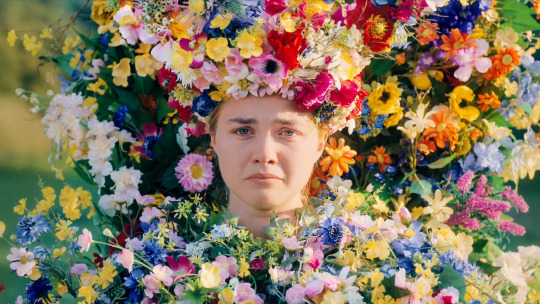
No século XIX, porén, as flores tiñan unha maior importancia. Servían como inspiración para elementos decorativos, mobles, cadros; tamén engalanaban tecidos para roupa -e non restrinxida ao xénero feminino, ollo- e elementos tapizados, entre outras cousas. Existiu incluso unha moda de asignar significados concretos a cada tipo de flor, creando mensaxes complexos en cada ramo segundo as especies que o conformaban. Non podería asegurar que a xente na realidade se mandaba mensaxes regalando flores, pero é certo que dende 1819 en diante escribíronse libros fermosamente ilustrados sobre a materia. Mira que dá que falar este século! Aínda que é certo que certas plantas, vexetais e flores xa tiñan a súa relevancia para contos populares como A Bela e a Besta, adaptado ao cinema por Jean Cocteau en 1946. E non, non é exactamente igual que a versión de Disney de 1991: no conto orixinal a rosa tiña un significado especial, non máxico senón moral, pois é usado como metáfora da humildade de Bela fronte á superficialidade das súas irmás, que prefiren xoias e vestidos.
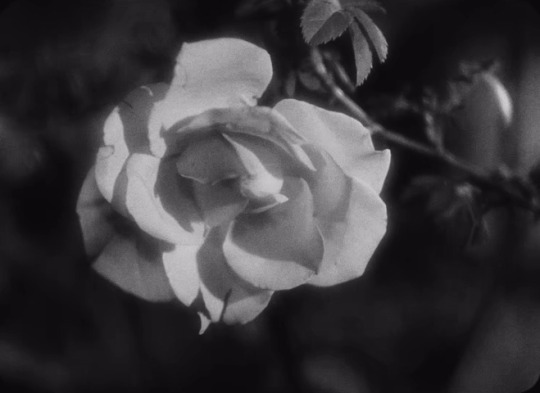
Algúns daqueles significados permanecen máis ou menos alterados na cultura popular hoxe en día: asociamos as rosas ao amor apaixoado e as margaridas á inocencia, por exemplo. E o cinema, coma sempre, toma vantaxe destes significados arraigados na nosa mente colectiva á hora de crear os seus sistemas simbólicos. O mellor aliado das flores na pantalla, por certo, foi o technicolor, o sistema de filmación en cor desenvolto e potenciado no Hollywood do cinema clásico. Cando o technicolor era un reclamo tecnolóxico para o público, desexoso de novas experiencias despois de décadas de cinema en branco e negro -isto daría para un artigo enteiro, pero quedádevos con que a cor leva canda o cinema case dende o comezo, aínda que non foi popularizado no cinema mainstream até esta época- os estudos querían historias vivas e saturadas que desen a máis mínima excusa para lucir as súas cores. Como os musicais de Vincente Minnelli ou, sen ir máis lonxe, The Wizard of Oz (Victor Fleming, 1939) e as súas fermosas e perigosas papoulas.
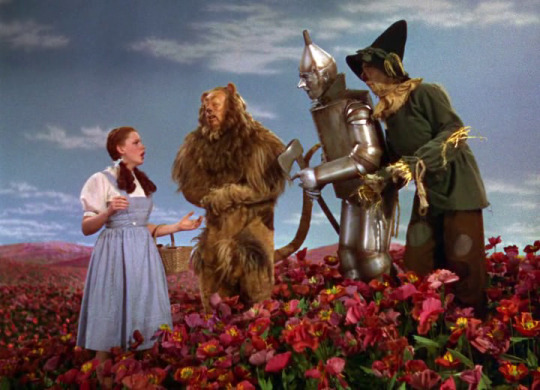
Os significados ligados ás flores adoitan formar parte dun conxunto de valores asociados na tradición occidental co feminino: delicadeza, beleza, perfección, fraxilidade, vaidade. Existe un nesgo que relaciona unicamente ao xénero feminino e ao seu rol social coas flores, un nesgo limitante e limitado que desbota que si que existen épocas e contextos sociais nos que estes valores -e polo tanto os motivos florais- se poden relacionar con roles e personaxes masculinas: dende a flor de Lis como símbolo da monarquía medieval francesa até o flower power pacifista de finais dos sesenta do pasado século.
Aos seres humanos sempre nos pareceron belas as flores. Como ás abellas. E o que ten de particular a beleza das flores é precisamente a súa fugacidade: murchan e desaparecen en pouco tempo. A súa é unha beleza efémera, curta e intensa; polo tanto, foi sempre moi tentador utilizalas para representar a fermosura da traxedia -ou o tráxico da beleza-. O feito de que todo, por moi bo que sexa, non vai durar para sempre.
Fuxindo destas apreciacións máis xerais, os universos simbólicos internos dunha película tamén se poden construír coas flores como base, imprimíndolles significados concretos e orixinais no contexto narrativo. As rosas, en American Beauty (Sam Mendes, 1999), están por todas partes e destacan coa súa saturación e profundidade nunha cinematografía máis uniforme e coherente. Nunha primeira impresión calquera persoa diría que simbolizan a luxuria -un significado máis popular- ou o desexo na personaxe de Lester Burnham. Mais non só o acompañan a el! Acompañan a todas as personaxes todo o tempo. É quizais unha maneira de falarnos de sentimentos apaixoados mais comúns, superficiais -desexo, vaidade, perfeccionismo- en contraposición coa verdadeira beleza da imperfección e da humildade. A beleza dunha bolsa de plástico voando ao vento... por exemplo.
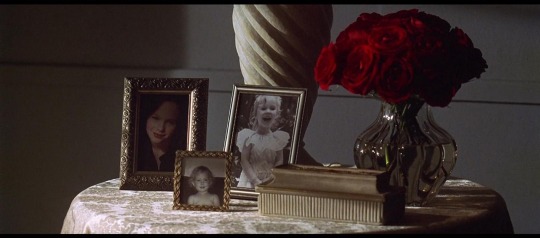
O cinema en si mesmo é, como xa temos comentado nalgunha ocasión, un intento de capturar a arte e a beleza volátil das cousas, das persoas e dos obxectos, e mantela no tempo a través das eras. A pantalla volve eterno o efémero, e proba diso son as fermosas flores que Percy Smith filmou a florecer en 1910 e que aínda hoxe temos ocasión de desfrutar cos ollos de cen anos despois.
Até o vindeiro episodio!
7 notes
·
View notes
Photo



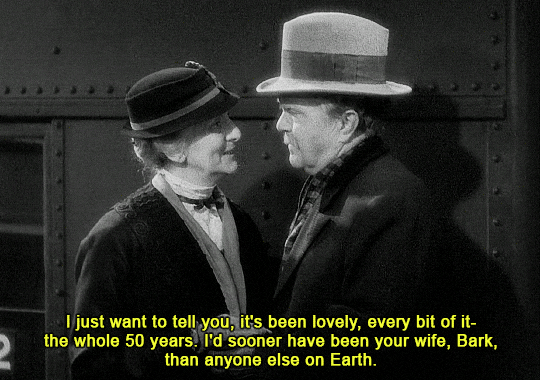
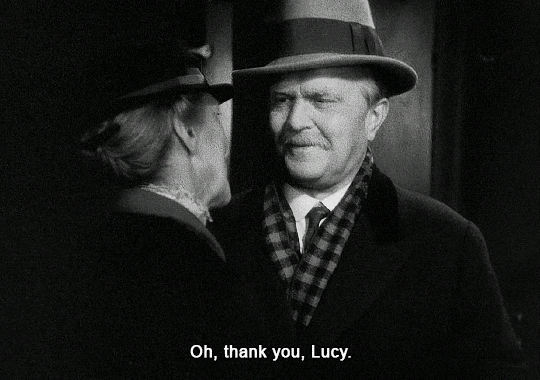
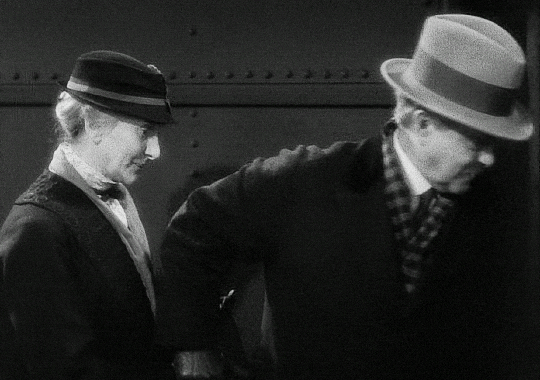


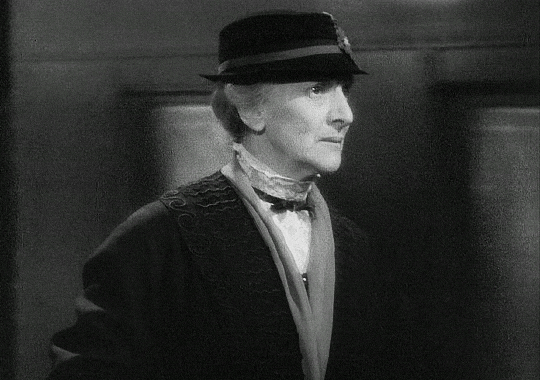
Beulah Bondi and Victor Moore in Make Way for Tomorrow (Leo McCarey, 1937) Cast: Beulah Bondi, Victor Moore, Fay Bainter, Thomas Mitchell, Porter Hall, Barbara Read, Maurice Moscovitch, Elisabeth Risdon, Minna Gombell, Ray Mayer, Ralph Remley, Louise Beavers, Louis Jean Heydt. Screenplay: Viña Delmar, based on a novel by Josephine Lawrence and play by Helen Leary and Nolan Leary. Cinematography: William C. Mellor. Art direction: Hans Dreier, Bernard Herzbrun. Film editing: LeRoy Stone. Music: George Antheil, Victor Young. As the music ("Let Me Call You Sweetheart") swelled, and the train taking her husband to California pulled out of the station leaving Lucy Cooper (Beulah Bondi) alone on the platform, I muttered, "Please end it here. Please end it here." And so Leo McCarey, bless him, did. He could have, as the studio wanted, moved on to a mawkish conclusion, pulling a sentimental rabbit out of the hat in which their children relented and found a place where Barkley (Victor Moore) and Lucy Cooper could live together, but thank whatever gods preside over cinema, he didn't. I thought, before my reading confirmed it, that Yasujiro Ozu must have seen Make Way for Tomorrow -- or as seems to have happened, his scenarist Kogo Noda did. This is one Hollywood picture from the '30s and '40s that has its head on straight, keeping its heart in the right place. The film gives us complex, fallible characters instead of sugary and vinegary stereotypes: The elder Coopers are as much to blame for the predicament in which they find themselves as their children are for not finding a satisfactory way to resolve it. As an aged parent, one who once faced the problem of an aged parent, I find the film's willingness not to lay blame on anyone refreshing: Barkley Cooper should not have allowed himself to get in the financial difficulty in which he finds himself; he and Lucy should have come clean to the offspring about their money difficulties long before they did. And though it's easy to see the children as hard-hearted and selfish -- the film does tilt a little more in that direction than it might -- what we see on the screen makes clear that housing Lucy and Barkley is a little harder than it ought to be. She seems oblivious to the burdens she puts on George (Thomas Mitchell) and Anita (Fay Bainter), and he is a cantankerous handful for Cora (Elizabeth Risdon) and Bill (Ralph Remley), refusing to follow the doctor's instructions. McCarey and his wonderful cast handle all of this superbly, with McCarey not only stubbornly refusing to provide a conventional movie ending, but also withholding some information a lesser director would have made much of, such as what Rhoda (Barbara Read) did when she disappeared that night, or what Barkley said to his daughter on the telephone when he informed her that he and Lucy weren't coming to their farewell dinner. (I think it's better that we don't know what he told her to do with that roast she was planning to serve.) A small, surprising treat of a movie.
gifs from manderley
8 notes
·
View notes
Text
ORGANIZING TAGS
#samhain #yule #imbolc #ostara #beltane #litha #lughnasadh #mabon
#autumn #winter #spring #summer
#spiritual #Pagan #nature #transcedence #transformation #death & rebirth #mystery #mindfulness #solace #endurance #hearth #interconnectedness #awen #mythology
#sensory/visceral #everyday #rain & fog #Appalachia feels #social justice #ocean #forest
#cozy #peace #humor #mood #joy #love #gratitude #hope #grief #healing
📚📚📚📚📚
ENTITIES
#Artemis #Hestia #Hekate #Cailleach #Triple Goddess #Green Man #Horned God
📚📚📚📚📚
AUTHORS
#alla renee bozarth #anne sexton
#annie dillard #billy collins
#book of taliesin (medieval) #brian doyle
#caroline mellor #carl sandburg
#ceisiwr serith #clint smith
#diana di prima #e e cummings
#eloise klein healy #emily dickinson
#erica helm #ezra pound
#f douglas brown #frances hayes
#fred chappell #galen gilotte
#hafiz #jrr tolkien
#kahlil gibran #kvayn
#langston hughes #madisen kuhn
#matthew olzmann #marguerite kingman
#mary oliver #mary soon lee
#maya angelou #nancy wood
#naomi shihab nye #nicolette sowder
#nizar qabbani #nv bennett
#pablo neruda #rabindranath tagore
#ranier maria rilke #robert bly
#robert frost #rochelle wallace
#rose may dance #rumi
#stephanie kallos #susan griffin
#shawna lemay #shu ting
#solmaz sharif
#ted loder #thomas rain crowe
#tukaram #victor anderson
#violet #ws merwin
0 notes
Text
Frankenstein: An Analysis of a Critique
Anne Mellor’s essay “Frankenstein: A Feminist Critique of Science” argues her point, made clear in the title of her essay. Originally printed in One Culture: Essays in Science and Literature, in 1987, Mellor uses the platform to inform the reader of a different view of Mary Shelley’s novel. Mellor presents these ideas using an extensive dive into the scientific context of the time period, including various quotes from Frankenstein itself and other authors, coupled with the organization of her essay. Both of these literary strategies help Mellor convince the reader that Frankenstein should be seen as a feminist piece of literature that critically analyzes the science of the time.
The entire first two sections of Mellor’s essay delve into the time period in which Frankenstien was written, specifically looking at scientifically. While some readers may have some background information already, Mellor summarizes three leaders of science view’s that helped shape Mary Shelley’s book: Erasmus Darwin, with his gradual evolution theory, and Luigi Galvani and Humphrey Davy, with their discoveries in human sciences. An in-depth, yet concise and to the point, debrief of the societal beliefs surrounding the science community helps the reader understand the context in which Mary Shelley wrote Frankenstein, furthering Mellor’s stance by setting up a series of facts that lead to her end argument.
The author breaks each scientist down into separate parts, never joining more than two main scientists into the same point. From the reader’s standpoint, this makes understanding each reason Mellor gives much easier. Each scientist is almost given their own “mini essays”, each with an opening, body, and conclusion. The first scientist is Darwin, then Galvani, and towards the end, Francis Bacon. The formatting of the essay forces the reader to read through the author’s reasons first, and the why’s second. For example, the first scientist Darwin believed that men gave the entire ability to have offspring, and all women had to do was “provide nourishment to [the] seed” (Mellor). After explaining this to the reader, Mellor can provide the reader with logical conclusions, stemming directly from sentences that came prior. In the Darwin example, Mellor concludes that Shelley wrote Victor Frankenstein to be a bad scientist and was evil in the fact that he could not give the monster the “maternal love and nurture it requires” (Mellor). This conclusion is set out perfectly for the reader to digest, and promptly moves onto the next.
A drawback that this essay may have is that there is not much focus outside of the science of the time period. However, due to the fact that this work of literature is a science-fiction novel, the main focus should be on science. The entire novel is centered around the idea of whether science is being used for good or for evil, and the essay effectively critiques that.
The final thing this essay does really well is the author utilizes in-text citations and evidence to validate her point. Referencing the novel provides the reader with an accurate view of where Mellor’s points are coming from. She cites the book multiple times per page, and even goes so far as to put a long quotation from Frankenstein. No context or connection back to the text would render the author’s argument invalid, as there would be no true substance to the argument being made. However, the readers can trust that the author has done her part in analyzing the book, based on the sheer fact that there are so many references back to the novel.
Overall, this essay is very effective in conveying Mellor’s argument of Frankenstein being a feminist critique on science at the time. The essay does this in multiple different ways, from using the novel heavily to back the claims, to using factual evidence of the scientific context.
Works Cited
Mellor, Anne. “Frankenstein: A Feminist Critique of Science”. One Culture: Essays in Science and Literature. Edited by George Levine and Alan Rauch, University of Wisconsin
Press, 1987, pp. 287-312.
0 notes
Photo






the models and the kids
#i love this training video so much >.<#mason is only 19 after all :')#so adorable#also harry and vic walking side by side im okay. my heart is okay#manchester united#harry maguire#victor lindelof#paul pogba#raphael varane#d'mani mellor#mason greenwood#jesse lingard#mine#otp: most complicated husbands ever existed#footballedit#mufcedit
17 notes
·
View notes
Text
Reading Time: 2.5 mins
The nature of knowledge can be destructive. This belief is explored in Mary Shelley’s Frankenstein through the symbolism of light and the motif of passive women. Instead of celebrating the enlightenment period, Shelley laments the destructive nature of advancing science in its denial of God and its potential to become monstrous.
Frankenstein was written in the midst of the Industrial Revolution. Scientists such as Giovanni Aldini, carried out experiments in galvanism, making large-scale discoveries in technology, revolutionising society. This new enlightened rationality was the driving force behind modernity suggesting man could be anything he desired. Frankenstein epitomises these views and encapsulates the dangers of this new rationale.

https://unsplash.com/photos/jw3GOzxiSkw
Even though Shelley was writing over 200 years ago, it will come to no surprise to modern day readers, that Frankenstein still has relevance and resonates today with the cloning of Dolly the sheep and scientists are still creating genetically modified mammals.

The symbol of light is a reoccurring theme, symbolising knowledge, discovery and enlightenment. This is portrayed when Victor Frankenstein;
‘infused a spark of being into the lifeless thing’.
The spark symbolises the recently discovered electricity, embodying the new discoveries of the enlightenment period and the dangers present. One might question whether or not this barbarous pursuit of knowledge should be sought and does it in fact, cause more harm than good?
youtube
Frankenstein takes God out of the equation. His desire is to have limitless power, to become a creator of beings, changing natural cycles, ‘Life and death appeared to me ideal bounds which I should first break through’. Frankenstein wants to be ‘first’, indicative of his desire to become omniscient and to exceed others around him. To become the first to transgress against nature and change the natural course of the world, ‘It was the secrets of heaven and earth that I desired to learn’. As Anne K. Mellor alludes, ‘Frankenstein has perverted evolutionary progress’. Raping nature of its natural course and in doing so usurping the power of God. We might question ourselves about our own society and if we too have taken modernity too far?
This transgression towards nature and God is exemplified through the vainglorious traits of Victor and Walton;
‘I will pioneer a new way, explore unknown powers and unfold to the world the deepest mysteries of creation’.
characteristic of the scientists at work that Shelley knew. Both characters are beset with going beyond the boundaries of current knowledge, so much so that Walton is nearly lost to the ice, and Frankenstein isolates himself from society. In their amoral hunger for success that nearly destroys them. Walton represents a new form of overreaching and so Frankenstein becomes the older form, a warning to Walton, ‘seek happiness in tranquillity, and avoid ambition’. This exemplifies the ultimate wielder of life and death that is nature itself, and this is what ultimately kills Frankenstein and his creation.I strongly believe these were Shelley’s views on what the future will hold if society doesn’t change its ways. It’s proof that mankind hasn’t changed at all, humanity is still narrowminded and egotistical.

https://unsplash.com/photos/-90kxRqKSmc
Shelley exposes this perilous and malevolence of scientific hubris through the motif of the female characters of the novel. Created as passive and weak, Justine, who is wrongly accused and executed for murder, the female monster who is aborted by Victor, and Elizabeth, who waits helplessly for Victor’s return, yet is brutally murdered by Frankenstein’s own creation. Shelley subjects them all to such ill treatment, killing them off one by one to eradicate the female influence. In doing so, she calls attention to the obsessive and obstructive behaviour that Frankenstein exhibits and embodies what Shelley deems as ‘bad science’.
Shelley encapsulates the dangers of enlightenment and the responsibilities that result from it. This is the condition of modernity that Shelley sees for us in this newly godless universe. It’s clear that the true monster of the novel is in fact the scientist Frankenstein. Monstrosity isn’t just a physical thing. The core of monstrosity in the novel, is modernity itself.
6 notes
·
View notes
Text
Is Frankenstein frankly pretty sexist?
Reading time: 2 mins
What is the first thing that comes to mind when you think of Frankenstein? Is it the monster? The mad scientist? The desire for knowledge? Or is it the clear misogyny throughout the novel?
Like all works of literature, Frankenstein is a product of its time. The nineteenth century was one of immense gender inequality and it is no surprise that Shelley’s novel offers very few rights for the women within it. The two main female protagonists in the novel are perfect examples of the ideals of femininity that existed at the time. For example, Caroline is presented as a woman who is seen as incapable of looking after herself, and because of this, requires the protection of a man… *rolls eyes*. Her character acts as a reflection of the position of women within a patriarchal society such as the nineteenth century.
The dependency that women were expected to have on men is shown when Victor states that his father ‘strove to shelter’ his mother. Victor goes on to describe his mother, Caroline, as a ‘fair exotic’, as though she is this fragile and vulnerable flower that relies on the male gardeners care and attention for survival. Oh please.

Not only does this show the almost sub-human status of women during the nineteenth century as she has been compared to an inanimate object, but also explores the archaic values of the time.
Mellor argues that in Frankenstein, ‘women are relegated to the private or domestic sphere’ and the word ‘relegated’ is a very relevant term here. Like your favourite sports team, women’s positions in society is one that is inferior and lower than their male counterparts. The best example of a domesticated woman is Victor’s love interest, Elizabeth Lavenza, who writes in a letter that ‘the blue lake and snow-clad mountains – they never change’. Shelley uses the monotonous scene in Elizabeth’s proximity as a way of criticising the tedious and repetitive lifestyle that women were subjected and expected to lead. The prejudice against women is further shown via Victor referring to Elizabeth as his ‘pretty present’.
So why does Victor expect his fiancé to appear under the Christmas tree?

Well, it has a lot to do with the old-fashioned view that women were seen as the property of their husbands. And like all great misogynists, Victor views her as an object that belongs to him. However, his possession over Elizabeth doesn’t end here. He notes that he ‘looked upon Elizabeth as mine – mine to protect, love and cherish’. Alexander asserts that in Shelley’s time, the ‘ideal woman is a subjugated woman’, one that is submissive and conforms to the outdated stereotypes. Blah blah blah.
I don’t know if you’ve noticed but almost all of the women in Frankenstein die.
Why is that you ask? It might be because their deaths happen to contribute to the storyline, or it might be because Frankenstein is inherently sexist. If we agree that Frankenstein is a reflection of the society it is set in, then it is unsurprising that none of the female characters survive. In other words, this isn’t a coincidence….
Caroline = dies.
Justine = executed.
The creature’s female companion = ripped apart and destroyed by Victor.
Elizabeth = murdered.
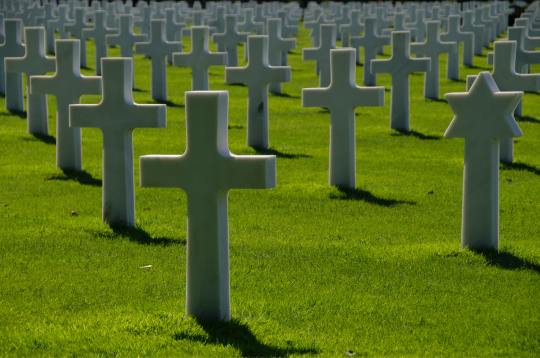
So, what does this say about femininity?
More specifically, what does it say about English femininity?
As the only women who survive Shelley’s brutal killing spree are Safie and Agatha. It is important to note that neither of them are English – Safie is Turkish and Agatha is German.
By showing the other female character’s passivity, Shelley simultaneously critiques stereotypes imposed on women within the English society that she herself was subjected to.
#frankenstein#maryshelley#womeninliterature#victor#fairexotic#elizabethlavenza#victorfrankenstein#caroline frankenstein#femininity
3 notes
·
View notes
Text
O monstro
vimeo
Co gallo do último artigo, adicado á debullar a obra de tres grandes cineastas do expresionismo alemán, mencionei brevemente unha figura arquetípica que, na miña opinión, é interesante ampliar nun novo episodio: o monstro.
O termo en si é ambiguo. Cando falamos dun monstro podemos falar das deformidades físicas, xenéticas ou ambientais, que describiría Ambroise Paré ou calquera outro estudoso da teratoloxía; pero é máis probable –na fala coloquial– que nos esteamos referindo a unha criatura de orixe sobrenatural que nos amedrenta no profundo dun bosque ou debaixo da cama; ou a un individuo cruel e perigoso que, mediante unha metáfora, asociamos co terror sobrenatural e chamamos “monstro”.
Algún espelido ou espelida notaría que até tres dos exemplos do vídeo introdutorio corresponden a personaxes e historias creadas por Stephen King e adaptados ó cinema por bos cineastas. Penso que xa queda claro que este arquetipo concreto é unha herdanza directa da literatura, mais poderiamos retroceder no tempo moito máis atrás, xa que a literatura en realidade o recolleu da narración oral e popular, da mitoloxía que poboou o mundo de vampiros e lobishomes, Adze ou Wendigos, por poñer varios exemplos. Dende o Minotauro da tradición grega clásica, o monstro, en realidade, designa e materializa os nosos medos: ó descoñecido, á natureza ou á maldade das persoas. Cando nesta bitácora falamos de Fritz Lang, F. W. Murnau e G. W. Pabst, falamos de home-monstro-lunático por este mesmo motivo: porque nos serve para designar tanto a Nosferatu como a Fausto, tanto a Quasimodo como a Norman Bates.
De feito, baixo a etiqueta monstro, o noso arquetipo bifúrcase. Nin tódolos monstros son malos, nin todos presentan anomalías, deformidades ou fealdades. É máis que habitual na literatura –e por suposto, no cinema– falar de monstros inocentes e de homes e mulleres que, detrás dunha bela fachada, esconden a monstruosidade do seu verdadeiro carácter. Poderiamos incluso trazar un diagrama cartesiano en cuxo eixo vertical poderiamos situar os extremos “bo/inocente” e “malo/culpable” e no horizontal “belo/normativo” e “feo/diferente”. Observaríamos entón, ó situar nel personaxes como as mencionadas, que unha liña diagonal define o que nós entendemos como monstro. E, por suposto, os exemplos máis interesantes –que trataremos máis adiante neste mesmo artigo– son aqueles que se achegan á orixe, ó cero.
Tamén nos sorprenderiamos ó situar a cronoloxía da historia do cinema neste diagrama, pois existen tendencias claras da utilización do arquetipo. Cando o cinema era xove e aínda non ousaba independizarse do resto das artes, a novela –gótica– decimonónica era obxecto de adaptacións e remakes constantes, nutrindo os guións das primeiras longametraxes. Das novelas de Víctor Hugo extraemos os primeiros monstros inocentes, a variante do arquetipo que no noso diagrama ocuparía o cuadrante que designa ós bos pero diferentes ou feos, co exemplo máis obvio: Quasimodo, o campaneiro da catedral de Notre Dame de París, inmortalizado no cinema por Lon Chaney en 1922 e por Charles Laughton no 1939. Mais Victor Hugo tamén deu vida coa súa pluma a personaxes menos coñecidas como Gwynplaine, o protagonista da novela L´homme qui rit e do filme The Man Who Laughs (Paul Leni, 1928), de herdanza expresionista, curiosamente. Gwynplaine é un home atormentado por unha condición que o obriga a sorrir a pesares de ser un home triste e miserable. É rexeitado pola sociedade, ó igual que Quasimodo, que o teme e repudia ó tempo que se burla del. A historia de Gwynplaine, ademais de constituír un exemplo paradigmático de ironía e dualidade, recolle todas e cada unha das características do monstro inocente: odiado, temido e burlado por unha sociedade cruel que penaliza a diferenza. Incluso as cumpre mellor que Quasimodo pois, a modo de anotación, este último non é tan inofensivo na novela como nas sucesivas adaptacións audiovisuais. A criatura de Frankenstein na súa versión cinematográfica tamén se acolle mellor a este arquetipo que a versión orixinal da brillante Mary Shelley, que ideou unha criatura máis bela e intelixente, pero ó tempo máis vingativa e indolente que a representada por Boris Karloff. Unha criatura que, xunto co Drácula encarnado por Bela Lugosi, inaugurou a idade de ouro dos monstros da Hammer: monstros do tipo sobrenatural que se moven entre os dous cuadrantes do diagrama, entre a inxenuidade da criatura de Frankenstein e a perversidade do conde Drácula.
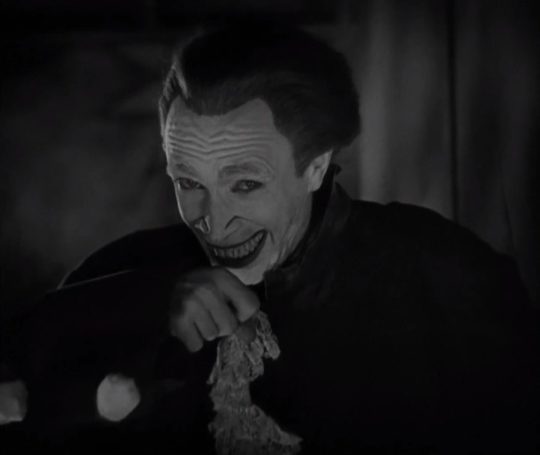
O monstro inocente tivo a súa representación máis alá da Hammer e máis preto do noso tempo, con filmes como The Elephant Man, de David Lynch (1980), que conta a historia real de Joseph Merrick, un home culto e sensible que padecía unha terrible enfermidade que condicionou a súa curta vida. O filme de Lynch expón o dilema do doutor Treves, o home que sacou a Merrick da mísera vida de atracción de circo para mellorar o seu benestar... sen deixar de ser unha atracción para o público debido á atención mediática do caso. Pois, por desgraza, a traxedia dunha persoa adoita ser espectáculo para outra. O monstro cáusanos rexeitamento e desgusto mais, ó mesmo tempo, unha atracción e curiosidade morbosa. E isto é aplicable, por suposto, ó espectador de cinema. Non entrarei nas implicacións éticas do fenómeno, mais é evidente que existe un dilema moral profundo arredor da cuestión. Deixareino á vosa reflexión.
O monstro inocente nunca deixou de aparecerse nos relatos cinematográficos, dende Gwynplaine a Edward Scissorhands (Tim Burton, 1990) ou Eduardo Manstesoiras, un dos últimos exemplos máis puros deste arquetipo. Mais ocupémonos por un momento do outro extremo: a monstrosidade que máis rexeitamento nos produce –e reitero, tamén máis atracción– é a do ser humano, a persoa que loce coma ti e coma min, pero que esconde un carácter violento ou sádico. Quero aclarar neste punto que existen patoloxías como a psicopatía ou a esquizofrenia que en ningún momento se deben xeneralizar como o fixo o cinema durante moitos anos –e segue a facelo, aínda que cada vez hai máis concienciación ó respecto– equiparando a quen padece estas condicións directamente con asasinos e monstros. É certo que houbo un auxe, dende Psycho de Alfred Hitchcock (1960) até os anos noventa, de slashers e outros xéneros de terror que, superando xa o tema sobrenatural, colocaron ó asasino en serie como antagonista principal. O monstro humano, máis ou menos “belo/normativo”, pero humano. O veciño que sempre saudaba. Hoxe en día, o xénero documental True Crime evidencia que estas historias sempre lle interesan á audiencia.
En moitas historias é habitual enfrontar ós dous extremos que acabamos de describir. Unha das máis obvias é a adaptación animada de The Hunchback of Notre Dame (Gary Trousdale, Kirk Wise, 1996) que verbaliza a cuestión en máis dunha ocasión formulando a pregunta “quen é o home e quen é o monstro?” referíndose a Quasimodo e ó xuíz Claude Frollo. Pero hai moitos máis exemplos, como o filme Les yeux sans visage (Georges Franju, 1960), unha historia moi dura de ver na que, unha vez máis, o monstro non é o que máis o parece. Retomemos un fío que deixei aberto, a propósito desta última apreciación sobre a ambigüidade moral: o de aquelas personaxes que se sitúan no centro do noso diagrama imaxinario. A ambigüidade sempre foi máis interesante que o maniqueísmo e isto reflíctese no cinema en casos como o do protagonista de M (Frizt Lang, 1931), un filme ó que xa acudín en moitas ocasións nesta bitácora –agardo que perdoedes esta absoluta devoción ó cinema de Lang e a unha obra que teño no cumio da arte cinematográfica– e que xira arredor dun home que podemos considerar no máis baixo da escala moral, capaz de facer dano ó máis puro e inocente deste mundo... e que, en certa escena, nos obriga a miralo ós ollos e a empatizar con el. Non son quen de explicar a xenialidade desta perspectiva así que, se non tivestes a ocasión de ver este filme, convídovos a facelo canto antes. Non vos arrepentiredes.
Se nesta ocasión falamos moito de dilemas, moralidade, ética, ironía e ambigüidade é porque nada é branco é negro no cinema. Ben, non literalmente porque o cinema a cor existiu case dende o comezo mais non se popularizou até os anos corenta ou cincuenta. O que quero dicir é que a narrativa humana está chea de grises. As historias que nos contamos as persoas dende o inicio da linguaxe e do arte até o desenvolvemento do cinema –e máis alá–, aínda que en ocasións estean condicionadas por visións absolutas do ben e o mal, cumpren moitas veces a labor de poñer sobre a mesa cuestións complexas de abordar para, quizabes, concienciar e buscar solucións. Ou, polo menos, para amosar a complexidade inherente á nosa existencia. Por exemplo os nosos medos, as nosas sombras, os nosos monstros e a maneira que ten a sociedade para xestionalos.
Até o episodio vindeiro!
#monster#monstruo#monstro#galiza#hammer film#hammer horror#frankenstein#victor hugo#quasimodo#drácula#dracula#expresionismo alemán#david lynch#galego
2 notes
·
View notes
Text
Righty ho, so I put a bunch of footballers into a PowerPoint and told my family to guess their names... this was the outcome. My mum in red, my youngest sister in Yellow, my dad in green and my other sister in blue
David de Gea - Callum, Johnny, David✅, Gareth
Dean Henderson - Conner, Cyrus, Nick, Leon
Victor Lindelof - William, Ben, Victor✅, Nick
Phil Jones - Gary, Pierce, Phil✅, Phil✅
Harry Maguire - Jonathan, Harry✅, Harry✅, Joseph
Alex Telles - Leroy, Bruno, Tony, LeTroy
Paul Pogba - Jerome, Gary, Eric, Jeremiah
Scott McTominay - Ashley, Ashley, Scott✅, George
Donny van de Beek - Sven, Ben, Alfie, Sam
Bruno Fernandes- Jake, Bruno✅, Bruno✅, Jack
Anthony Martial - Jermaine, Jerry, Anthony✅, TJ
Mason Greenwood - Tyler, Mason✅, Mason✅, Marcus
Edinson Cavani - Pierre, Jason, Edinson✅, Stewart
Marcus Rashford- Tyrone, Mason, Beans✅, Marcus✅
Ole Gunnar Solskjaer - Derek, Ole✅, Ole✅, Ole✅
Odion Ighalo - Jehmal, Johnny, Odion✅, Kamal
Luke Shaw - Gary, Guy, Luke✅, Gary
Fred - Leroy, Roy, Fred✅, Terrence
Facundo Pellistri - Michael, Patrick, Eric, Patrick
Christen Press - Janice, Megan, Nathasha, Addison
Emily Ramsey - Amy, Megan, Stacey, Alex
Katie Zelem - Chelsea, Addison, Sinead, Shanice
Jackie Groenen - Emily, Beatrice, Gemma, Georgia
Alessia Russo - Caitlin, Eleanor, Emma, Victoria
Brandon Williams - Aaron, George, Brandon✅, Oliver
Lauren James - Lorraine, Bonny, Lauren✅, Natasha
Amy Turner - Becky, Emily, Katie, Charlotte
Lotta Ökvist - Emma, Emma, Emma, Emma
Ona Batlle - Kate, Kay, Tina, Tony (?)
Leah Galton - John (?), Becky, Chloe, Rebecca
Ivana Fuso - Chloe, Connie, Bethany, Tanisha
D’Mani Bughail Mellor - Dilbert, Terrence, Rafael, Rafaelo
Tobin Heath - Charlotte, Becky, Wendy, Chantelle
Ella Toone - Neve, Niamh, Abigail, Alisha
Ben Chilwell - Michael, James, James, John
Jesse Lingard - Troy, LeToe (?), Jesse✅, Jesse✅
Daniel James - Adam, Daniel✅, Daniel✅, Jordan Henderson
Harry Kane - Gareth, Harry✅, Harry✅, Harry✅
Jadon Sancho - Will, Bur, Jadon✅, Cameron
Gareth Southgate - Gareth ✅, Gareth✅, Gareth✅, Gareth✅
Phil Neville - Kenneth, Bennett, Phil ✅, Ian
Casey Stoney - Camilla, Sonja, Stacey, Katrina
3 notes
·
View notes
Text
The DeLacey Phenomenon
Within the beginning of the book, falling shortly after Victor’s creation of the Creature, we come to meet a new set of characters. While wandering the countryside to flee the wrath of Geneva, the Creatures comes upon a small, isolated cabin in the woods. This cabin is where the DeLacey family resides, allowing the Creature to watch them and observe human interactions firsthand.
The family consists of four main people: DeLacey, Felix, Safie, and Agatha. DeLacey is a blind old man who acts like the man of the house, being the parent to both Agatha and Felix. His daughter, Agatha, is a selfless being who takes care of the family, while his son, Felix, is undoubtedly devoted to his family and his lover, Safie– an outsider in the family. Safie acts as almost an adopted member of the family, as she is soon to be married to Felix.
Throughout the Creature’s adaptation of the family’s story, we learn that Felix is in the process of tutoring Safie in language and speech. Such tutoring benefiting the Creature as well in helping him form an indirect relationship with her and the family as a whole. The family also aids in the Creature’s general character development in both positive and negative ways, giving him the skill of speech and expression, while also overall making his intelligence a more fearful aspect than his appearance. This plot event is crucial in the sense that it represents one of the first times the Creature is exposed to others, rather than just Victor, and can begin to come to terms with himself through the observation of others.
Through the monster’s continuous teaching in language, he is able to pick up on more human characteristics. He notices the family’s struggle, as the disadvantages they’re put at are prominent aspects of their everyday lives. Although poverty and disability are typically a roadblock, in the DeLacey family it acts as a great equalizer. They are not given the same opportunities as everyday people, so they are eternally grateful and optimistic about what they do have. He notices the daily tasks the family completes each day to simply survive and feels an urging need to help as well. The Creature shows sympathy for the family, and in his efforts to keep them on their feet, he weeds their garden and picks produce out for them. Although the family is unsure who did such a selfless deed for them, we see how thankful they are again.
With all summary aside, we can discuss the rising question here:
Why exactly is the DeLacey family such an important aspect in terms of gender roles?
If we revert to the very beginning of the book, we’re quickly introduced to Frankenstein’s family. His family consists of both women and men, yes, but their familial roles are what sets them apart from the DeLacey’s. Within Victor’s house, the men typically hold more power and/or importance than the women, who usually serve as servants within the home. This is where we begin to see typical gender roles come into play–– women doing work similar to that of a housewife and men playing the “man of the house” archetype. Though DeLacey himself also acts as the leader of the home, we see one crucial difference: the lack of dominance.
From an outsider perspective, the DeLacey family has a normal, per se, home with no one holding more power over anyone else. “Mary Shelley underlines the mutual deprivation inherent in a family and social structure based on rigid and hierarchical gender divisions by portraying an alternative social organization in the novel: the DeLacey family… In contrast to this pattern of political inequality and injustice, the De Lacey family represents an alternative ideology: a vision of a social group based on justice, equality, and mutual affection” (Mellor). One could even say the family is the perfect representation of quid pro quo–– doing things to benefit each other, not just themselves. Again, exposure to poverty and disability plays an important role in their family. Since they are all at the same level of struggle, there’s no need for one party to be more dominant, especially when they’re all just trying to survive each day in general. They’re different from the typical family at the time; each member isn't expected to uphold any role or task/job. It seems as if Shelley wanted to bring the DeLacey family in to show a “perfect” world compared to a “man-made” world (that being Victor’s interpretation of the world around him). Building on that, the family represents isolation, loneliness, compassion for the Creature’s character.
The family gives the Creature a sense of confidence, hence his eventual decision to approach DeLacey during the absence of the rest of the family. Unfortunately for the Creature, the book eventually wipes the family from the plot after the infamous scene of Felix attacking the Creature, upon his return to the cottage, takes place. Despite the attack, he chooses to return to the family’s home, but they had already deserted it. Their lack of presence through the rest of the book symbolizes how such genuinely interworking personalities/roles can never be fully obtained, but also how an artificial, man-made world also can cause demise to those in it. It’s as if no matter how the world is sorted (ie. by class), there will never be true agreement or equilibrium.

(Media Citation 2)
#progressive#the strugge is real#creature is lowkey stalking but we'll excuse it#don't need no man (victor)#stick beatdown ft. felix delacey#where's my invitation to their wedding? excuse you
1 note
·
View note
Video
youtube
Sunrise: A Song Of Two Humans (1927/28) - Charles Rosher & Karl Struss
White Shadows In The South Seas (1928/29) - Clyde De Vinna
With Byrd At The South Pole (1929/30) - Joseph T. Rucker & Willard Van der Veer
Tabu: A Story Of The South Seas (1930/31) - Floyd Crosby
Shanghai Express (1931/32) - Lee Garmes
A Farewell To Arms (1932/33) - Charles Lang
Cleopatra (1934) - Victor Milner
A Midsummer Night’s Dream (1935) - Hal Mohr
Anthony Adverse (1936 B&W) - Tony Gaudio
The Garden Of Allah (1936 COLOR) - W. Howard Greene & Harold Rosson
The Good Earth (1937 B&W) - Karl Freund
A Star Is Born (1937 COLOR) - W. Howard Greene
The Great Waltz (1938 B&W) - Joseph Ruttenberg
Sweethearts (1938 COLOR) - Oliver T. Marsh & Allen Davey
Wuthering Heights (1939 B&W) - Gregg Toland
Gone With The Wind (1939 COLOR) - Ernest Haller & Ray Rennahan
Rebecca (1940 B&W) - George Barnes
The Thief Of Bagdad (1940 COLOR) - Georges Perinal
How Green Was My Valley (1941 B&W) - Arthur C. Miller
Blood And Sand (1941 COLOR) - Ernest Palmer & Ray Rennahan
Mrs. Miniver (1942 B&W) - Joseph Ruttenberg
The Black Swan (1942 COLOR) - Leon Shamroy
The Song Of Bernadette (1943 B&W) - Arthur C. Miller
Phantom Of The Opera (1943 COLOR) - Hal Mohr & W. Howard Greene
Laura (1944 B&W) - Joseph LaShelle
Wilson (1944 COLOR) - Leon Shamroy
The Picture Of Dorian Gray (1945 B&W) - Harry Stradling
Leave Her To Heaven (1945 COLOR) - Leon Shamroy
Anna And The King Of Siam (1945 B&W) - Arthur C. Miller
The Yearling (1946 COLOR) - Charles Rosher, Leonard Smith & Arthur E. Arling
Great Expectations (1947 B&W) - Guy Green
Black Narcissus (1947 COLOR) - Jack Cardiff
The Naked City (1948 B&W) - William H. Daniels
Joan Of Arc (1948 COLOR) - Joseph A. Valentine, William V. Skall & Winton Hoch
Battleground (1949 B&W) - Paul C. Vogel
She Wore A Yellow Ribbon (1949 COLOR) - Winton Hoch
The Third Man (1950 B&W) - Robert Krasker
King Solomon’s Mines (1950 COLOR) - Robert Surtees
A Place In The Sun (1951 B&W) - William C. Mellor
An American In Paris (1951 COLOR) - Alfred Gilks & John Alton
The Bad And The Beautiful (1952 B&W) - Robert Surtees
The Quiet Man (1952 COLOR) - Winton Hoch & Archie Stout
From Here To Eternity (1953 B&W) - Burnett Guffey
Shane (1953 COLOR) - Loyal Griggs
On The Waterfront (1954 B&W) - Boris Kaufman
Three Coins In The Fountain (1954 COLOR) - Milton R. Krasner
The Rose Tattoo (1955 B&W) - James Wong Howe
To Catch A Thief (1955 COLOR) - Robert Burks
Somebody Up There Likes Me (1956 B&W) - Joseph Ruttenberg
Around The World In 80 Days (1956 COLOR) - Lionel Lindon
The Bridge On The River Kwai (1957) - Jack Hildyard
The Defiant Ones (1958 B&W) - Sam Leavitt
Gigi (1958 COLOR) - Joseph Ruttenberg
The Diary Of Anne Frank (1959 B&W) - William C. Mellor
Ben-Hur (1959 COLOR) - Robert Surtees
Sons And Lovers (1960 B&W) - Freddie Francis
Spartacus (1960 COLOR) - Russel Metty
The Hustler (1961 B&W) - Eugen Schufftan
West Side Story (1961 COLOR) - Daniel L. Fapp
The Longest Day (1962 B&W) - Jean Bourgoin & Walter Wottitz
Lawrence Of Arabia (1962 COLOR) - Freddie Young
Hud (1963 B&W) - James Wong Howe
Cleopatra (1963 COLOR) - Leon Shamroy
Zorba The Greek (1964 B&W) - Walter Lassally
My Fair Lady (1964 COLOR) - Harry Stradling
Ship Of Fools (1965 B&W) - Ernest Laszlo
Doctor Zhivago (1965 COLOR) - Freddie Young
Who’s Afraid Of Virginia Woolf? (1966 B&W) - Haskell Wexler
A Man For All Seasons (1966 COLOR) - Ted Moore
Bonnie And Clyde (1967) - Burnett Guffey
Romeo And Juliet (1968) - Pasqualino De Santis
Butch Cassidy And The Sundance Kid (1969) - Conrad L. Hall
Ryan’s Daughter (1970) - Freddie Young
Fiddler On The Roof (1971) - Oswald Morris
Cabaret (1972) - Geoffrey Unsworth
Cries And Whispers (1973) - Sven Nykvist
The Towering Inferno (1974) - Fred J. Koenekamp & Joseph F. Biroc
Barry Lyndon (1975) - John Alcott
Bound For Glory (1976) - Haskell Wexler
Close Encounters Of The Third Kind (1977) - Vilmos Zsigmond
Days Of Heaven (1978) - Nestor Almendros
Apocalypse Now (1979) - Vittorio Storaro
Tess (1980) - Geoffrey Unsworth & Ghislain Cloquet
Reds (1981) - Vittorio Storaro
Gandhi (1982) - Billy Williams & Ronnie Taylor
Fanny And Alexander (1983) - Sven Nykvist
The Killing Fields (1984) - Chris Menges
Out Of Africa (1985) - David Watkin
The Mission (1986) - Chris Menges
The Last Emperor (1987) - Vittorio Storaro
Mississippi Burning (1988) - Peter Biziou
Glory (1989) - Freddie Francis
Dances With Wolves (1990) - Dean Semler
JFK (1991) - Robert Richardson
A River Runs Through It (1992) - Philippe Rousselot
Schindler’s List (1993) - Janusz Kaminski
Legends Of The Fall (1994) - John Toll
Braveheart (1995) - John Toll
The English Patient (1996) - John Seale
Titanic (1997) - Russell Carpenter
Saving Private Ryan (1998) - Janusz Kaminski
American Beauty (1999) - Conrad L. Hall
Crouching Tiger, Hidden Dragon (2000) - Peter Pau
The Lord Of The Rings: The Fellowship Of The Ring (2001) - Andrew Lesnie
Road To Perdition (2002) - Conrad L. Hall
Master And Commander: The Far Side Of The World (2003) - Russell Boyd
The Aviator (2004) - Robert Richardson
Memoirs Of A Geisha (2005) - Dion Beebe
Pan’s Labyrinth (2006) - Guillermo Navarro
There Will Be Blood (2007) - Robert Elswit
Slumdog Millionaire (2008) - Anthony Dod Mantle
Avatar (2009) - Mauro Fiore
Inception (2010) - Wally Pfister
Hugo (2011) - Robert Richardson
Life Of Pi (2012) - Claudio Miranda
Gravity (2013) - Emmanuel Lubezki
Birdman (2014) - Emmanuel Lubezki
The Revenant (2015) - Emmanuel Lubezki
La La Land (2016) - Linus Sandgren
Blade Runner 2049 (2017) - Roger Deakins
12 notes
·
View notes
Text
Manchester United's 2018-19 Premier League Squad (confirmed)
25 Squad players (*Home grown)
Bailly, Eric Bertrand Darmian, Matteo De Gea Quintana, David Fellaini-Bakkioui, Marouane Grant, Lee Anderson* Herrera Aguera, Ander Hoelgebaum Pereira, Andreas Hugo* Jones, Philip Anthony* Lindelof, Victor Jorgen Nilsson Lingard, Jesse Ellis* Lukaku, Romelu Menama* Martial, Anthony Joran Mata Garcia, Juan Manuel Matic, Nemanja McTominay, Scott* Pogba, Paul Labile* Rojo, Faustino Marcos Alberto Romero, Sergio German Sanchez, Alexis Santos, Frederico Rodrigues De Paula Shaw, Luke Paul Hoare* Smalling, Christopher* Valencia Mosquera, Luis Antonio Young, Ashley Simon*
U21 players (Contracts and Scholars)
Baars, Millen Barlow, Aidan Will Begjer, Lukasz Bernard, Di'Shon Joel Bohui, Joshua Raymond Borthwick-Jackson, Cameron Jake Bughail-Mellor, D'Mani Lucell Burkart, Nishan Connell Carney, Jacob Andrew Chong, Tahith Dalot Teixeira, Jose Diogo Dearnley, Zachary Harry Denham, Oliver James Devine, Reece Dunne, Max Edward Elanga, Anthony David Junior Ercolani, Luca Fojticek, Alex Fosu-Mensah, Evans Timothy Fosu Galbraith, Ethan Stuart William Garner, James David Gomes, Adilson Angel Abreu de Almeida Greenwood, Mason Will John Gribbin, Callum Anthony Hamilton, Ethan Billy Haygarth, Maxwell James Helm, Mark Henderson, Dean Bradley Hockenhull, Ben Kovar, Matej Laird, Ethan Benjamin Levitt, Dylan James Christopher Mastny, Ondrej McCann, Charlie Liam McGhee, Dion Alex McIntosh-Buffonge, Darren Raekwon Mengi, Teden Mambuene Mitchell, Demetri Kareem Neville, Harvey James O'Connor, Lee Patrick Olosunde, Matthew Olawale Poole, Regan Leslie Puigmal Martinez, Arnau Ramazani, Largie Rashford, Marcus Sang, Thomas Roy Stanley, Connor Scott Tanner, George Thompson, James George Traore, Aliou Badara Tuanzebe, Axel Warren, Tyrell Nathaniel Whelan, Callum Tyler Williams, Brandon Paul Brian Williams, Ro-Shaun Oman
6 notes
·
View notes
Text
War of the Worlds Season 2 Ending: Breaking the Time Loop, Bill, Emily and the Future
https://ift.tt/3A2W8Uy
Warning: contains spoilers for War of the Worlds Season 2.
Bill did it. He went back in time, broke the time loop, erased the aliens out of existence and saved billions of lives by stopping Earth from ever coming under their devastating attack in the first place. Almost erased the aliens out of existence, that should say, because – handily for season three – the alien invasion timeline is still somehow creating ripples in this parallel universe. And almost erased most of the aliens out of existence, that should really say, because when Bill travelled back in time, he took half a dozen of the Invaders along with him. Now they’re on Earth too, with nothing but hatred for humanity. Should end well.
How did Bill manage it? Why are echoes of the other timeline bleeding through into the new one? And what does all of this mean for War of the Worlds’ recently commissioned third season? Let’s dig in.
How did Bill go back in time?
By using Micah’s matter wave transposing formula and an alien ship. As Isla told Bill, the alien spaceships are alive; their matter waves grow and change, which opens a pathway to enable time travel. Micah’s formula had been devised to travel back to a point in time that would break the invasion time loop and stop the alien race from ever existing. Unable to reproduce on their home planet, plagued by genetic weakness, and raised to hate humankind, the aliens invaded Earth to slaughter its people, cure themselves, and colonise the planet. Micah evidently thought genocide too high a price to pay for survival and so sought a different route. He did the maths required to plot a course back to a point in time from which he could sabotage the Invasion plan by stopping his people from ever existing in the first place.
Somehow, Micah knew a) that Emily was the ancestor of his people, and b) the timetable of her hospital appointments. He wrote a formula to a point in time where she could be killed before she and Sacha conceived the twins that would form the starting point of this new human-hating human race. Before he could carry out his plan though, he was killed by his brother Jokim at the Grenoble Observatory (where he’d traced the source of the signal Catherine and her colleagues sent into space). After he was killed, Catherine took his journal containing the formula, and brought it to London to share with Bill Ward, to whom she passed on Victor’s lesson about the need to have faith.
Isla had become disenchanted with Adina’s tunnel-vision belligerence and started to question if there was really any difference between her people and the humans she’d been raised to believe were so worthy of hate. She chose to betray her people and help to finish what Micah started after she learned that Adina had lied to her about Micah having been killed by the humans. She got Bill on board a ship and programmed it with Micah’s formula before Adina, Jokim and a handful of others chased them on board. Adina shot Isla, and everybody on board the alien ship was transported back in time.
How did Bill break the time loop?
In the new timeline, Bill and Isla were found unconscious outside a hospital and taken in for treatment. Isla died of her gunshot wound, and Micah’s journal containing the time travel formula was taken from her and placed into storage. Bill spotted Emily, Sarah and Tom in the hospital and realised why he’d been sent to that time and place. He led Emily – who was still blind in this timeline – onto the rooftop, told her that the visions she’d been having of dead bodies in the streets were of the future, and that he had to stop it from happening to save billions of lives. Then he pushed her off the roof, killing her. That stopped the timeline dead in which Emily and Sacha conceived the twins that went on to form the race that invaded Earth.
In retrospect, it’s a pity Bill didn’t hop on the Eurostar and push kitten-killing Sacha off a tall building instead of innocent Emily, but needs must. And to be fair to Bill, in the original timeline, Emily was also trying to kill Emily to stop herself from inadvertently creating a race of killer aliens, but Sacha wouldn’t let her die.
Bill’s choice was also a sacrifice for him, in a way. By killing Emily so publicly, he made himself the chief suspect in a murder investigation, and as we saw from the newspaper headline Zoe was reading, he was arrested at the end of the season. But not before he’d righted some past wrongs and made a proper apology to his ex-wife Helen (who’d died hating him for lying to her about her partner’s death), and told son Dan that he loved and was proud of him. A prison sentence, if that’s what Bill’s now facing, is a walk in the park compared to the timeline he’d just travelled back from.
Read more
TV
How Will War of the Worlds Season 3 Work?
By Louisa Mellor
TV
War of the Worlds Season 1 Recap: Aliens, Cyborg Dogs, Emily, Sacha and the Mystery Tattoo
By Louisa Mellor
So, everybody on board the ship travelled back in time with Bill?
It looks like it. Bill, Isla, Adina, Jokim and a handful of other aliens were all on board the ship when it moved back in time, and all of them ended up in the same hospital in the new timeline. As Bill has stopped their people from ever existing, the remaining aliens on Earth are outliers, stranded in this version of events without a past or a future.
And everybody killed during the series is now alive in the new timeline?
Absolutely. That list includes Bill’s son Dan, who works for the government, his ex-wife Helen, Sarah Gresham, hospital porter Ash, Kariem’s sister (?), Sacha’s father/uncle Noah, and most importantly for us: Professor Catherine Durrand, who was shot in the head by a Mechanical in the original timeline in the finale, but who is now alive and well and repairing her estranged relationship with her recovering drug addict sister Sophia.
And all of the connections we saw made in the series now never happened?
That’s right. The soldiers never came to the Observatory, so Catherine and Colonel Mokrani never met and fell in love, neither did Sophia and Nathan, whose unborn baby now doesn’t exist. Emily never met Kariem, and crucially, never met and conceived twins with Sacha. Presumably Sarah and Jonathan are still together in the new timeline, as Jonathan never met Chloe in France. Victor’s family are still alive and well, so he doesn’t attempt suicide and never meets Catherine. The list goes on.
Had we seen that footage of Catherine at the Observatory before?
Basically yes, though compare Catherine’s scenes in the season one premiere to these and there are very slight differences to her appearance and dialogue, which shows that the scenes were possibly re-filmed. In the show’s first ever episode, Catherine and her colleague chat about “choice paralysis” and supermarket toothpaste right before she detects the first alien invasion signal. In the season two finale, they have basically that same conversation but no signal arrives to interrupt, so it continues to Catherine’s colleague casually asking her out and her turning him down before visiting Sophia to make amends with her.
So, how is season three going to work if the aliens don’t exist?
It’s going to be different alright. And it’s worth remembering that some aliens still exist in this timeline, they’re just ship-less and Mechanical-less, and there are barely enough of them to form a decent five-a-side squad. One question that season three needs to answer is how the original timeline is bleeding into this revised version of events. New timeline-Zoe dreamt of a ‘memory’ from the old timeline, and from it, recognised both Bill and the name Emily. Her first port of call in the third season will be to Bill’s prison cell for a long chat. We delve into the season three possibilities in more detail here.
cnx.cmd.push(function() { cnx({ playerId: "106e33c0-3911-473c-b599-b1426db57530", }).render("0270c398a82f44f49c23c16122516796"); });
War of the Worlds season 2 is available to stream on Epix in the US and is airing weekly on Disney+ in the UK.
The post War of the Worlds Season 2 Ending: Breaking the Time Loop, Bill, Emily and the Future appeared first on Den of Geek.
from Den of Geek https://ift.tt/3fkXhyJ
1 note
·
View note